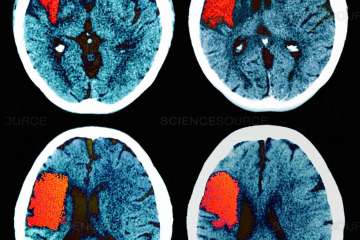Drs. Radoslav Raychev and Jeffrey Saver: UCLA researchers study stroke certification’s impact on outcomes
Thrombectomy – pulling a clot out of a blocked brain artery – is now the gold-standard treatment for acute ischemic stroke and was invented at UCLA.

After the designation “thrombectomy-capable stroke center” (TSC) was rolled out in 2018 and volumes of the procedure steadily increased, UCLA researchers wanted to better understand the role of TSCs in the U.S. stroke care system.
“The idea for the study was based on the relatively newly introduced level of certification for stroke centers, which was launched due to the overwhelming evidence of the benefit of thrombectomy,” explains Radoslav Raychev, MD, assistant clinical professor of neurology at UCLA and lead author.
“At UCLA, we wondered, ‘What is the impact [of the designation]? How do we increase access to treatment?’ It inspired us to really look at the guidelines, the national database and the capabilities of thrombectomy-capable centers to understand whether this designation benefits stroke patients, and what the potential deficiencies are in other centers. Most importantly, we were looking to improve stroke care nationwide and worldwide.”
UCLA has pioneered systems of care processes in parallel with procedural and scientific innovation, notes Dr. Raychev, highlighting the institution’s ongoing interest in addressing stroke care beyond the doors of their state-of-the-art center.
Dr. Raychev, along with Jeffrey Saver, MD, director of the UCLA Comprehensive Stroke and Vascular Neurology Program, set out to explore the difference in quality of care and clinical outcomes of reperfusion therapies to restore blood flow among primary stroke centers (PSCs), comprehensive stroke centers (CSCs) and TSCs.
Read more in this article from UCLA Health.